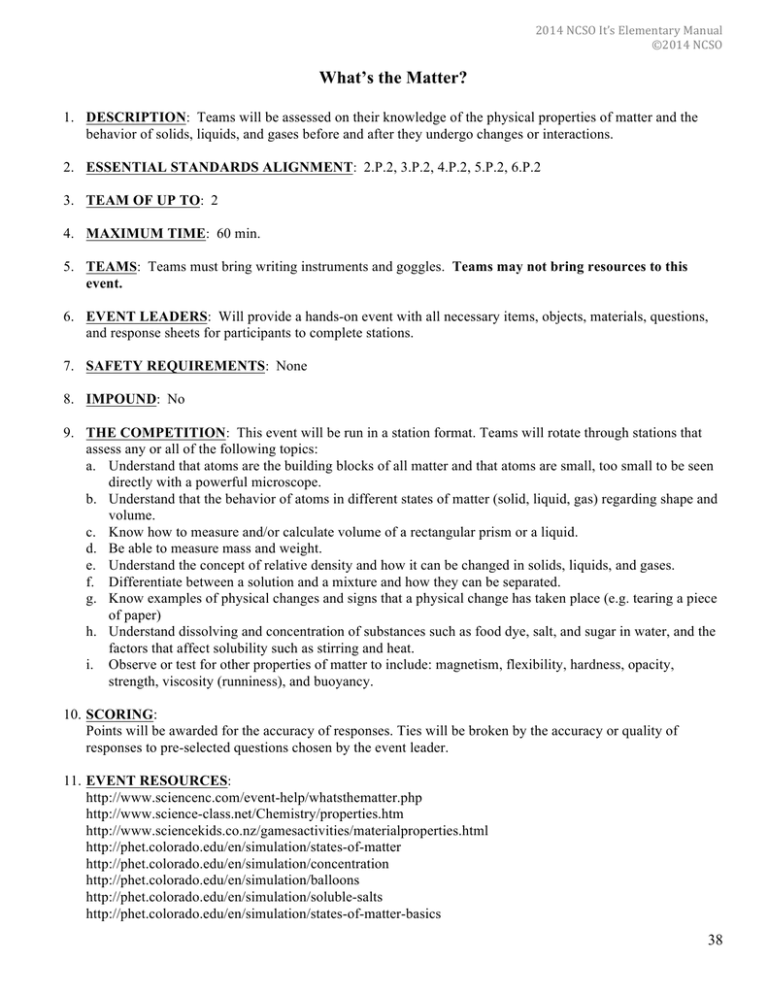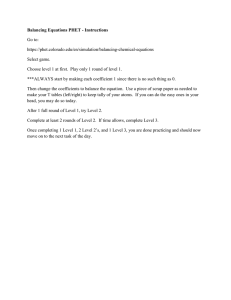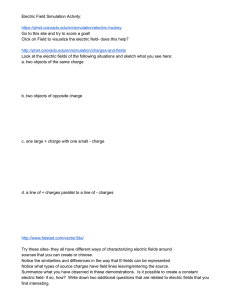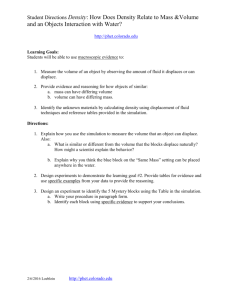What`s the Matter?
advertisement

2014 NCSO It’s Elementary Manual ©2014 NCSO What’s the Matter? 1. DESCRIPTION: Teams will be assessed on their knowledge of the physical properties of matter and the behavior of solids, liquids, and gases before and after they undergo changes or interactions. 2. ESSENTIAL STANDARDS ALIGNMENT: 2.P.2, 3.P.2, 4.P.2, 5.P.2, 6.P.2 3. TEAM OF UP TO: 2 4. MAXIMUM TIME: 60 min. 5. TEAMS: Teams must bring writing instruments and goggles. Teams may not bring resources to this event. 6. EVENT LEADERS: Will provide a hands-on event with all necessary items, objects, materials, questions, and response sheets for participants to complete stations. 7. SAFETY REQUIREMENTS: None 8. IMPOUND: No 9. THE COMPETITION: This event will be run in a station format. Teams will rotate through stations that assess any or all of the following topics: a. Understand that atoms are the building blocks of all matter and that atoms are small, too small to be seen directly with a powerful microscope. b. Understand that the behavior of atoms in different states of matter (solid, liquid, gas) regarding shape and volume. c. Know how to measure and/or calculate volume of a rectangular prism or a liquid. d. Be able to measure mass and weight. e. Understand the concept of relative density and how it can be changed in solids, liquids, and gases. f. Differentiate between a solution and a mixture and how they can be separated. g. Know examples of physical changes and signs that a physical change has taken place (e.g. tearing a piece of paper) h. Understand dissolving and concentration of substances such as food dye, salt, and sugar in water, and the factors that affect solubility such as stirring and heat. i. Observe or test for other properties of matter to include: magnetism, flexibility, hardness, opacity, strength, viscosity (runniness), and buoyancy. 10. SCORING: Points will be awarded for the accuracy of responses. Ties will be broken by the accuracy or quality of responses to pre-selected questions chosen by the event leader. 11. EVENT RESOURCES: http://www.sciencenc.com/event-help/whatsthematter.php http://www.science-class.net/Chemistry/properties.htm http://www.sciencekids.co.nz/gamesactivities/materialproperties.html http://phet.colorado.edu/en/simulation/states-of-matter http://phet.colorado.edu/en/simulation/concentration http://phet.colorado.edu/en/simulation/balloons http://phet.colorado.edu/en/simulation/soluble-salts http://phet.colorado.edu/en/simulation/states-of-matter-basics 38



